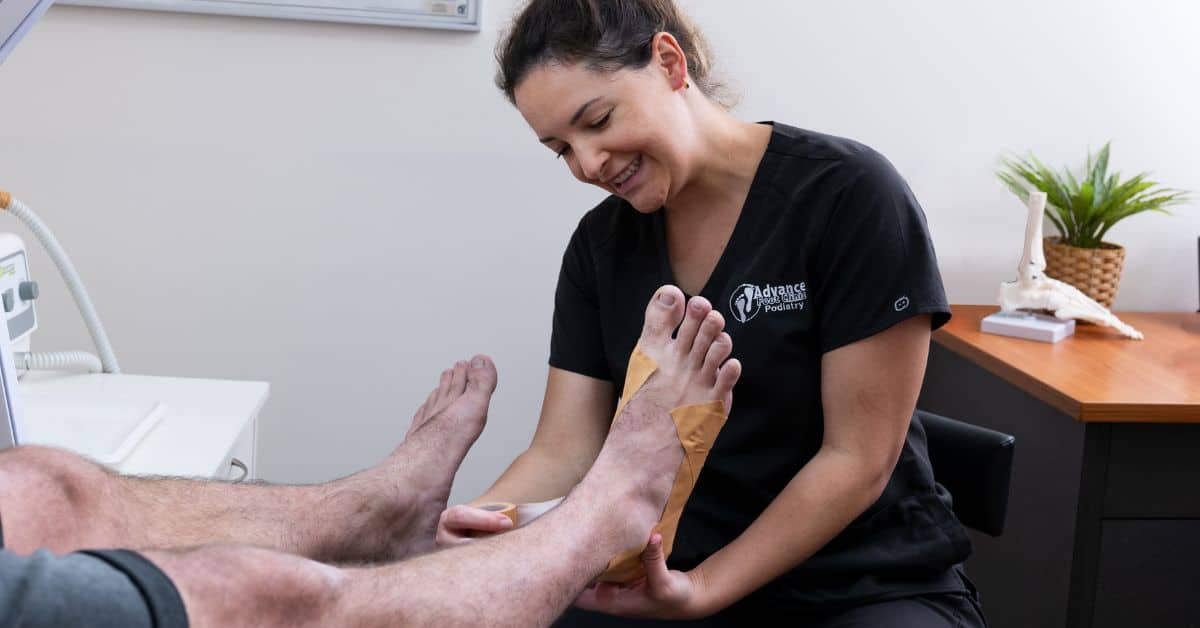Are you feeling discomfort along the outer edge of your foot or experiencing pain during movement? It could be a sign of peroneal tendonitis, a less common but very debilitating cause of foot, ankle and lower leg pain. In this blog, our experienced podiatrists will walk you through the ins and outs of peroneal tendonitis, shedding light on effective treatments and providing you with the information you need to recover and get back to the life you want.

Understanding Peroneal Tendonitis
Pain on the outside of your foot is less common than other types of foot pain, but it is equally troublesome once it is there. Peroneal tendonitis is a common issue causing pain and discomfort along the outside of the foot where the peroneal tendons run. The peroneal tendons play a crucial role in stabilising the foot and ankle during movement. When these tendons become inflamed or irritated, it can lead to peroneal tendonitis.
Pain on the outside of your foot is less common than other types of foot pain, but it is equally troublesome once it is there. Peroneal tendonitis is a common issue causing pain and discomfort along the outside of the foot where the peroneal tendons run. The peroneal tendons originate from three muscles (peroneus longus, brevis and tertius) which work together to pull up the outside of your foot (eversion). The peroneal tendons play a crucial role in stabilising the foot and ankle during movement. When these tendons become inflamed or irritated, it can lead to peroneal tendonitis.
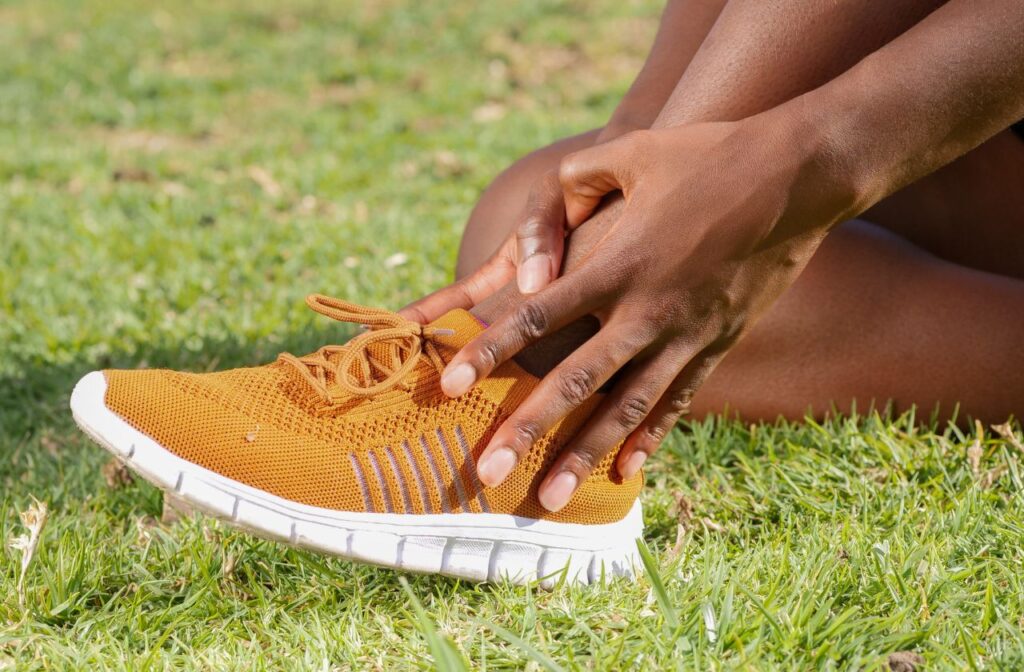
Symptoms
Peroneal tendonitis often manifests as pain, swelling, and tenderness along the outside of the ankle, behind the bony lump at your ankle known as the ‘lateral malleolus’. Pain can also be more around the front of the ankle, where the peroneus tertius tendon runs. When chronic, this condition can result in weakness and instability at the ankle joint which makes ankle sprains much more likely.
Identifying the Causes of Peroneal Tendonitis
What causes peroneal tendonitis? understanding the cause is key to preventing its onset and managing the symptoms effectively. Let’s delve into the factors that can contribute to this condition:
Overuse and Repetitive Stress
One of the primary culprits behind peroneal tendonitis is overuse. If you engage in activities that put repetitive stress on your feet, such as running, dancing, or participating in high-impact sports, you may be at a higher risk. Activities with a high use of ankle stabilisation from walking on uneven ground of rapid direction changes (such as hiking or basketball) are more likely to cause peroneal tendonitis.
To minimise the risk of overuse injuries, it’s crucial to incorporate rest days into your exercise routine and avoid sudden increases in activity intensity. Listen to your body – if you feel persistent discomfort, give your feet the break they need.

Improper Footwear Choices
Are you giving your feet the support they need? Wearing shoes with inadequate arch support or those that don’t fit properly can contribute to the development of peroneal tendonitis.
Investing in supportive footwear is an investment in your foot health. Look for shoes with a cushioned sole, proper arch support, and a design that suits your specific foot type. For example, if you have high arches (a cavus foot type), you should avoid strong ‘anti-pronation’ shoes, as these will tip your ankle too far outwards. Conversely, if you have very flat feet, you will need the support that anti-pronation shoes provide.
If you don’t know your foot type, you can ask a podiatrist or a reputable footwear store for individual recommendations.
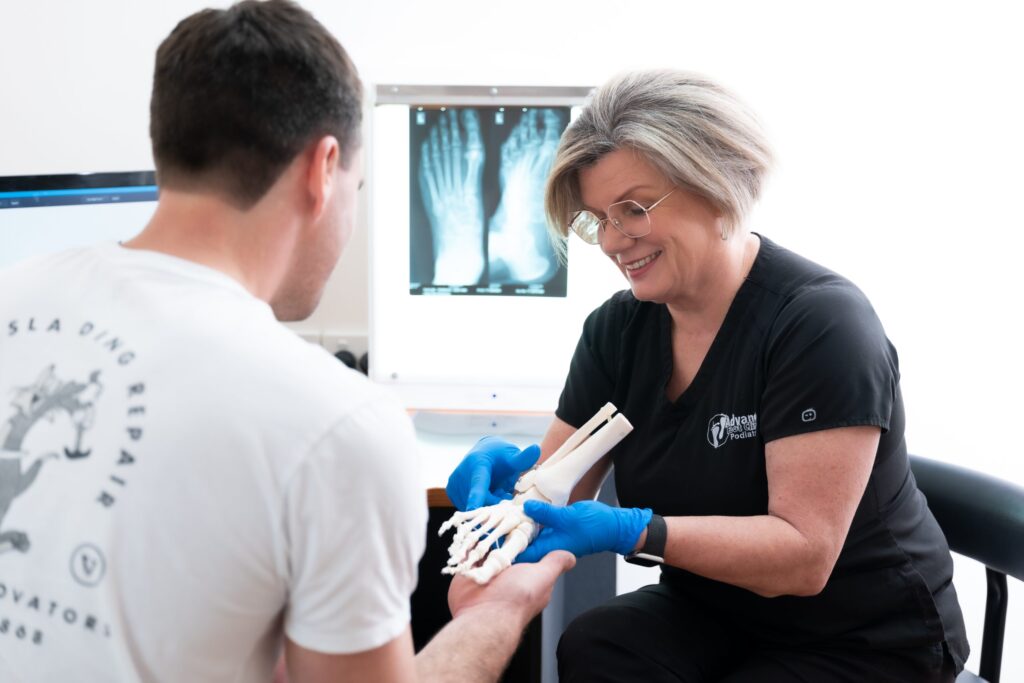
Ankle Instability
Weak ankles or a previous ankle injury can lead to instability, putting extra strain on the peroneal tendons. This heightened stress increases the likelihood of inflammation.
To address ankle instability, consider incorporating ankle-strengthening exercises into your routine. Your podiatrist can provide guidance on specific exercises to enhance ankle stability and prevent future issues.
Incorrect Training Techniques
If you’re pushing your limits without proper training techniques, you might be unknowingly setting the stage for peroneal tendonitis. Ensure that your exercise routine includes adequate warm-up, cool-down, and gradual progression.
Your training program should focus on a well-rounded approach, including strength training, flexibility exercises, and balance drills. Consult with a podiatrist to tailor a program that suits your individual needs.
Peroneal Tendonitis Treatment
Now that you’re armed with knowledge about peroneal tendonitis, let’s explore effective treatment options to help you regain control of your foot health.
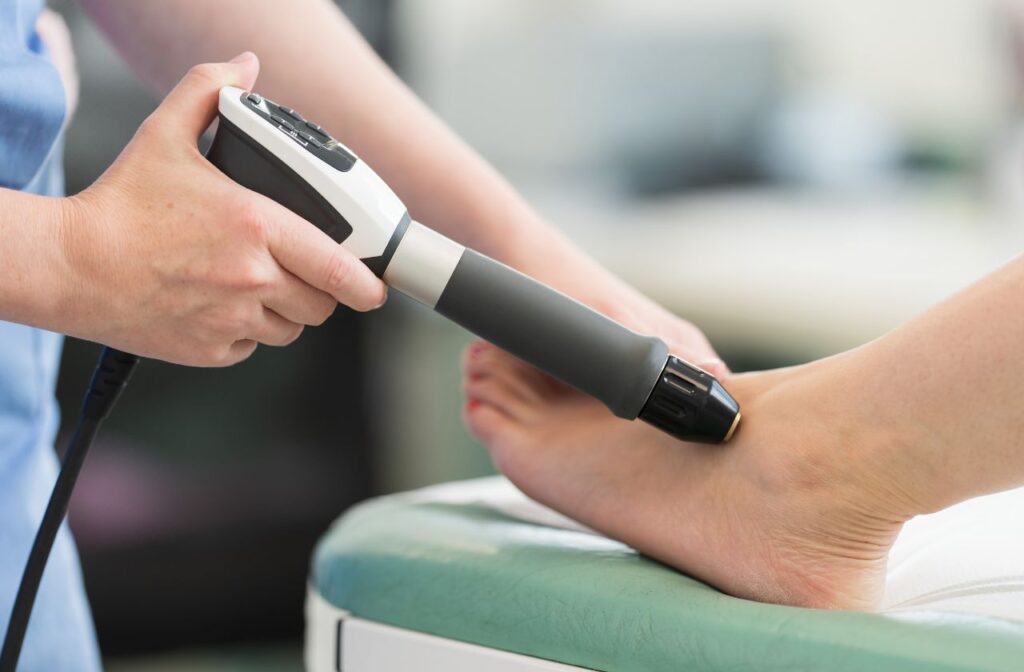
Rest: Your First Line of Defense
When you first notice symptoms of peroneal tendonitis, give your feet the rest they deserve. Icing the affected area can help reduce inflammation and ease pain. Remember, a little self-care and a day off training can go a long way.
During the initial stages of peroneal tendonitis, it’s crucial to allow your feet time to heal. Avoid activities that exacerbate the pain, and incorporate rest into your routine. Icing the affected area for 15-20 minutes at a time can help reduce swelling – just ensure you use a cloth or towel to protect your skin from direct contact with the ice.
If pain does not improve after a week or two of resting the tendons, you need to see a podiatrist for treatment.
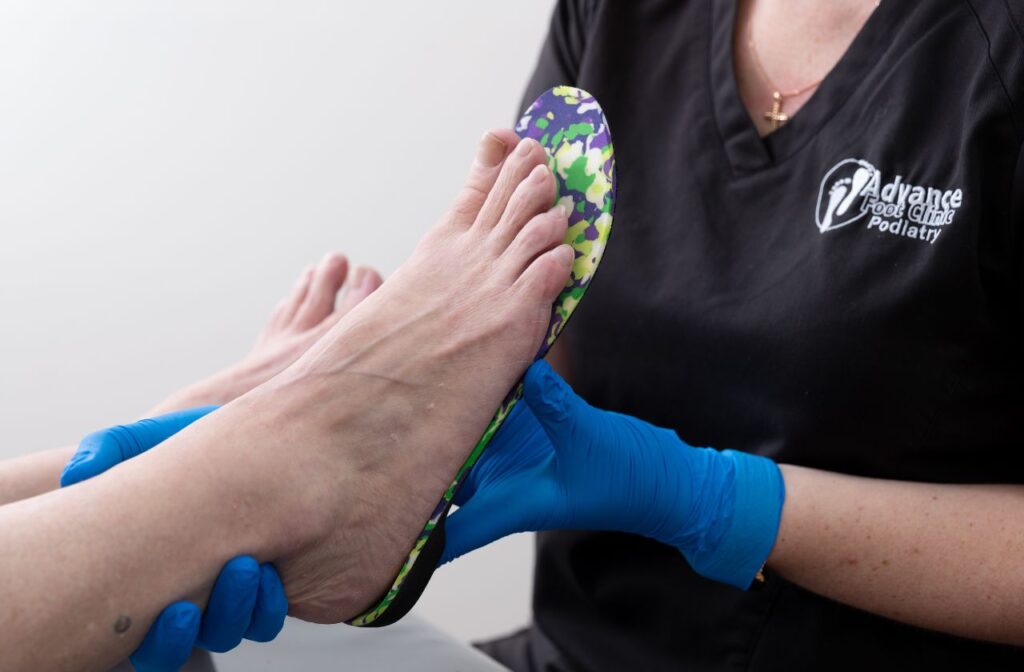
Orthotic Treatment
Orthotics, or custom-made shoe inserts, can play a crucial role in the treatment of peroneal tendonitis. These devices are designed to provide additional support, correct imbalances, and alleviate strain on the peroneal tendons.
Your podiatrist will conduct a thorough assessment of your foot structure and gait to create custom orthotics tailored to your individual needs. By wearing orthotics regularly, you can enhance foot support, reduce stress on the peroneal tendons, and promote proper alignment.
Shockwave therapy
Shockwave therapy is a highly effective treatment for peroneal tendonitis.
During a Shockwave session, high-energy acoustic waves are directed to the affected peroneal tendons thereby initiating increased blood flow, enhanced tissue repair, and the formation of new blood vessels. This triggers the body’s healing mechanisms to reduce pain and accelerate recovery.
Strengthening exercises: long-term recovery
Enlisting the help of a podiatrist for physical therapy can provide targeted exercises to strengthen the peroneal tendons and improve overall foot stability. A tailored plan ensures you’re on the right track to recovery.
Physical therapy plays a crucial role in rehabilitating peroneal tendonitis. Your podiatrist will assess your individual needs and design a program that addresses muscle imbalances, enhances flexibility, and promotes overall foot health.

Anti-Inflammatory Medications
In some cases, your podiatrist might recommend anti-inflammatory medications to help reduce pain and swelling in the short-term. Often a topical pain-relief gel will provide better relief than oral medication.
While medication can provide short-term relief, it’s essential to address the root causes of peroneal tendonitis through a comprehensive treatment plan. Consult with your podiatrist to determine the most suitable approach for your specific situation.
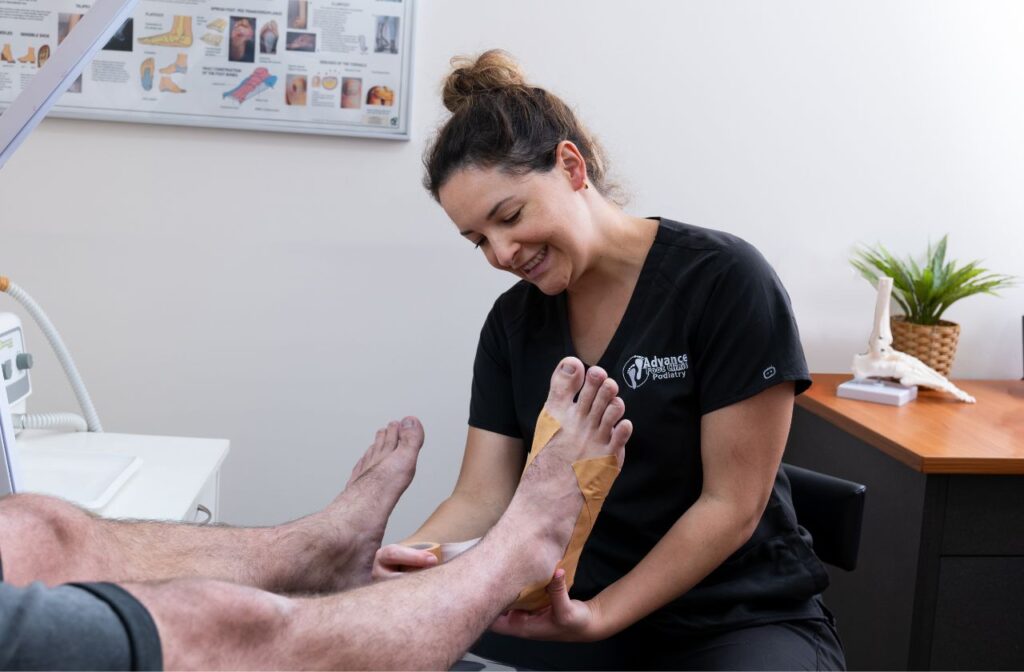
Prevention Strategies
Prevention is always the best cure. This involves adopting habits that protect your foot health. Let’s explore some practical steps you can take to reduce your risk.
Listen to Your Body
Pay attention to any discomfort or pain in your feet. If you notice something unusual, give your feet a break and consult with a podiatrist promptly.
Your body communicates through pain signals, and ignoring these warnings can lead to more severe issues. The idea that you can ‘walk off pain’ is incorrect. If you experience persistent discomfort, swelling, or changes in foot function, seek professional advice to address the underlying causes.
Gradual Exercise Progression
Whether you’re a seasoned athlete or just starting a fitness routine, gradual progression is crucial. Avoid sudden increases in intensity to protect your feet from overuse injuries.
Consider working with a fitness professional to develop a well-rounded exercise program that includes proper warm-up, cool-down, and gradual progression. This approach can help prevent not only peroneal tendonitis but also other common foot and ankle issues.
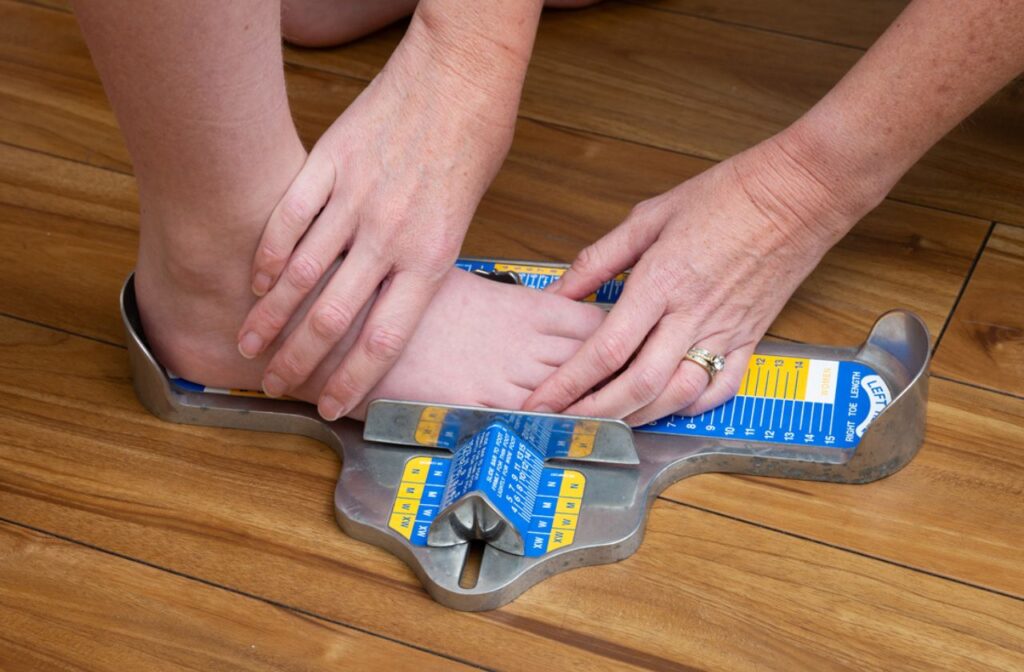
Choose the right footwear
Your choice of footwear matters. Opt for shoes that provide proper arch support, cushioning, and stability, especially if you engage in activities that stress your feet.
Visit a reputable shoe store or consult with a podiatrist to find footwear that suits your foot type and activity level. Investing in quality shoes will significantly reduce the risk of peroneal tendonitis.
Brisbane podiatry to recover from Peroneal Tendonitis
Pain from peroneal tendonitis doesn’t have to dictate your daily life. By understanding the causes, implementing effective treatments, and adopting preventative measures, you can recover from pain and stay mobile. Remember, your feet are the foundation of your mobility, and caring for them is an investment in your overall well-being.
If you’re experiencing symptoms of peroneal tendonitis or have concerns about your foot health, don’t hesitate to reach out to Advance Foot Clinic Podiatry. We’re here to support you on your journey to happy, healthy feet. Our team of experienced podiatrists is ready to provide personalised care to help you overcome peroneal tendonitis and enjoy a life of pain-free movement. Contact us today to schedule your consultation and take the first step towards happy feet.
